ERC Starting Grants for Laserlab Researchers
The ERC Starting Grants provide important stepping stones for young researchers who are building their own research teams. Grantees receive up to 1.5 million euros to conduct the research described in their proposals. Since the introduction of the Starting Grants by the European Research Council in 2007, more than 30 researchers from Laserlab-Europe partners have been awarded a Starting Grant, thereby proving their potential.
2025
Sven Askes (LLAMS): Heat in the driver’s seat: Unlocking the full potential of pulsed photothermal catalysis
In his ERC Starting Grant project HEATPULSE, Askes aims to challenge the traditional approach for the use of catalytic reactors in the chemical industry. These reactors normally operate at a constant temperature, making
them less controllable and less efficient. The researcher aims to change this by rapidly altering the temperature using short bursts of light and very small particles of materials that can efficiently convert light into heat. By precisely coordinating the timing of these light bursts to the speed of chemical reactions, he believes he can control the reactions better and enhance the energy efficiency.
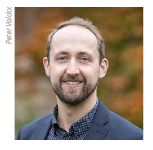
Eva Pogna (CNR-IFN): Taming radiative heat emission with anisotropic and time-varying media
The ERC Starting Grant project TREAT, led by Eva Pogna, aims to advance our understanding of thermal radiation. TREAT will explore novel strategies for realising time-crystals and controlling near-field heat flow using a combination of ultrafast spectroscopy, thermal imaging and ultrafast near-field imaging in the mid-IR and THz ranges, applied to epsilon-near-zero and hyperbolic media. The project objectives include deepening our understanding of thermal emission and developing innovative strategies for thermal management, IR light generation, and energy harvesting.
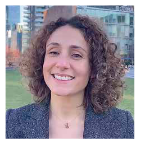
Franco V. A. Camargo (CNR-IFN): Holographic nanoscale imaging via femtosecond structured illumination
Super-resolution fluorescence microscopy has triggered a revolution in the bio-imaging community by offering information on sub-diffraction spatial scales with the benefits of far-field techniques. However, reliance upon incoherent signals arising from bright states has severely limited their adaptation to the realm of ultrafast imaging. Franco V. A. Camargo’s ERC Starting Grant project HOLOFAST will employ a new holographic approach to ultrafast microscopy to bring sub-diffraction limited spatial resolution to ultrafast timescales using nonlinear structured illumination, aiming for sub-10 fs temporal and ~10 nm spatial resolution.
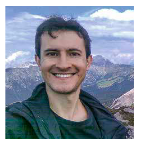
2024
Kasra Amini (MBI): Complete characterisation of photochemical reactions by time- and energy-resolved electron scattering
Kasra Amini will use his ERC Starting Grant to develop a ground-breaking technique called time- and energy-resolved electron scattering (TERES). This method will add an energy dimension to existing ultrafast electron scattering measurements, allowing the exploration of interactions between electrons and atomic nuclei in molecules and thin films. Amini‘s project combines ultrafast electron diffraction (UED), which tracks molecular structural changes, with electron energy loss spectroscopy (EELS), providing insights into electronic states. The TERES approach could revolutionise our understanding of molecular reactions by creating “quantum molecular movies“ that reveal detailed, real-time changes at the quantum level.
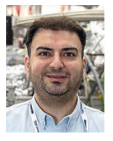
Jad C. Halimeh (MPQ): Quantum simulation of far-from-equilibrium gauge theories
The ERC Starting Grant will fund Jad C. Halimeh‘s project aimed at advancing quantum simulation, particularly in the challenging field of far-from-equilibrium gauge theories. These theories are crucial for understanding fundamental physics but are difficult to probe due to quantum entanglement in their non-perturbative dynamics. The project “QuSiGauge” employs a two-pronged approach: a technological pillar focused on developing large-scale quantum simulators of non-Abelian gauge theories in higher spatial dimensions and a phenomenological pillar aimed at uncovering exotic far-from-equilibrium quantum dynamics. The results could shed light on the nature of equilibration in isolated quantum many-body systems, with potential applications in quantum sensing and metrology.
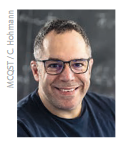
Marco Piccardo (IST): Space-time and vectorial meta-optics for high-power structured laser-matter interactions
Plasma, an extreme state of matter, is central to numerous advanced applications such as fusion energy and particle acceleration. High-power lasers, operating at terawatt or petawatt levels, are essential for the creation and control of plasma. However, a significant challenge in plasma science and engineering is the need for advanced beam control at these highpower levels. Marco Piccardo’s ERC Starting Grant project metaPOWER addresses this challenge by developing high-damage-threshold metasurfaces, a cutting-edge nanotechnology in structured light, for high-power lasers. The team will mold plasma using structured lasers as sculpting tools, unlocking an unprecedented control over laser-plasma interactions and enabling new possibilities in fusion energy, particle acceleration, and radiation sources.
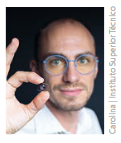
Guillermo González-Rubio (CLUR): Timescale-controlled transformations for colloidal multielemental nanocrystal design
Multielemental colloidal nanocrystals represent an exciting material class where surface and finite-size effects result in prominent physicochemical phenomena. Unfortunately, these nanomaterial features and their technological impact remain largely unexplored due to the high energy barriers and kinetic conditions often associated with the required synthesis process. With his ERC Starting Grant, Guillermo González Rubio will develop in the project Time4Nano a novel colloidal methodology to create highly out-of-equilibrium conditions required for multielemental nanomaterial creation. The major challenge is to combine pulsed laser irradiation and wet-chemical strategies to control chemical composition, elemental distribution, and lattice defects.
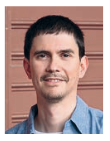
Previous Starting Grants
| name | project | year |
|---|---|---|
| Maximilian Beyer (LLAMS) | Helium dimer ultracold molecules – a platform for fundamental physics and ultracold chemistry | 2023 |
| Carl Davies (FELIX) | HandShake – Research on novel technology for electively switching magnetisation | 2023 |
| Pelayo Garcia de Arquer (ICFO) | Nanoscale advance of CO2 electro reduction | 2023 |
| Samuel Beaulieu (CELIA) | Ultrafast topological engineering of quantum materials | 2023 |
| Marcus Ossiander (IEP-TU Graz) | Extreme ultraviolet meta-optics for attosecond microscopy | 2023 |
| Adrien Leblanc (LOA) | Experimental signatures of quantum electrodynamics in the strong field regime | 2023 |
| Hugo Marroux (LIDYL) | Solution attosecond chemistry | 2023 |
| Sérgio Domingos (CLL) | Microwave finger-printing artificial molecular motors in virtual isolation | 2023 |
| Margherita Maiuri (POLIMI) | Manipulation of photoinduced processes by reshaping transition states via transient strong coupling | 2023 |
| Andrea Trabattoni (DESY) | Multi-messenger soft-field spectroscopy of molecular electronics at interfaces | 2023 |
| Matz Liebel (LLAMS) | Phototransient microscope | 2023 |
| Romain Géneaux (LIDYL) | Controlling spin angular momentum with the field of light | 2022 |
| Dmitri Efetov (ICFO) | Superconductivity in ‘magic angle’ graphene | 2019 |
| Matteo Lucchini (POLIMI) | Attosecond dynamics in two-dimensional materials | 2019 |
| Andreas Ehn (LLC) | Filming cold plasmas with lasers | 2019 |
| Mikkel Brydegaard (LLC) | Detecting insects with lasers | 2019 |
| Guillaume Salomon (MPQ) | Searching for fractional quantum states | 2019 |
| Benjamin Fingerhut (MBI) | Understanding ultrafast biomolecular processes | 2018 |
| Elias Kristensson (LLC) | Videos of ultrafast phenomena | 2018 |
| Andreas Reiserer (MPQ) | A scalable quantum network | 2017 |
| Simon Wall (ICFO) | Fluctuations in high-temperature superconductors | 2017 |
| Michael Krieg(ICFO) | How to build a brain? Engineering molecular systems for mechanosensing and protection in neurons | 2016 |
| Sébastien Corde (LOA) | Miniature beam-driven plasma accelerators | 2016 |
| Christian Gross (MPQ) | Rydberg dressing in ultracold atoms with ultraviolet laser light | 2015 |
| Edouard Berrocal (LLC) | Detailed Characterization of Spray Systems Using Novel Laser Imaging Techniques | 2014 |
| Francesca Calegari (POLIMI) | Steering Attosecond Electron Dynamics in Biomolecules with UV-XUV Light Pulses | 2014 |
| Darrick Chang (ICFO) | Frontiers of Quantum Atom-Light Interactions | 2014 |
| Carlo Sias (LENS) | An Ultracold Gas Plus One Ion | 2014 |
| Matteo Zaccanti (LENS) | Superfluidity and Ferromagnetism of Unequal Mass Fermions with Two- and Threebody Resonant Interactions | 2014 |
| Stefan Witte (LLAMS) | High-resolution Microscopy without Lenses | 2014 |
| Melike Lakadamyali (ICFO) | combining several advanced techniques (single particle tracking, quantitative single molecule counting, genetic manipulation, and fluorescence labelling) with ‘nanoscopy’ | 2013 |
| Caterina Vozzi (CUSBO) | Ultrafast dynamic imaging of complex molecules Molecules stimulated to emit extreme ultraviolet (XUV) light | 2012 |
| Alex Robinson (CLF) | Magnetic guiding of electrons for fusion In Inertial Confinement Fusion (ICF) experiments | 2012 |
| Masaki Hori (MPQ) | Precision laser spectroscopy of antiprotonic and pionic atoms | 2012 |
| Jérôme Faure (LOA) | Femtosecond laser-plasma based electron source | 2012 |
| Giacomo Roati (LENS) | Quantum simulation of two-dimensional fermionic systems | 2012 |
| Frank Koppens (ICFO) | Exploring Plasmons in Graphene | 2012 |
| Roberta Croce (LLAMS) | Molecular acclimation mechanisms in photosynthesis | 2011 |
| Dr. Randolf Pohl (MPQ) | Charge Radius Experiment with Muonic Atoms | 2011 |
| Prof. Hugues de Riedmatten (ICFO) | Bringing quantum computing beyond proof-of-principle | 2011 |
| Dr. Davide Iannuzzi(LLAMS) | Small, but many: scalability to volume production in fiber-top technology | 2011 |
| Prof. Stefan Kuhr (MPQ) | Single-atom-resolved detection and manipulation of strongly correlated fermions in an optical lattice | 2011 |
| Prof. Morgan Mitchell (ICFO) | Measuring magnetic fields with light and ultracold atoms | 2011 |
| Prof. Romain Quidant (ICFO) | New Frontiers in Plasmon Optics: From nanochemistry to quantum optics | 2010 |
| Prof. Gijs Wuite (LaserLaB Amsterdam) | Dissecting a minimal genome: a physical investigation of DNA transactions in mitochondria | 2010 |
| Prof. Antonio Acín (ICFO) | PERCENT - Percolating Entanglement and Quantum Information Resources through Quantum Networks | 2008 |
| Dr. Hendrick Bethlem (LLAMS) | build a molecular fountain | 2008 |
| Dr. Davide Iannuzzi | fiber-top technology and its applications | 2008 |
| Reinhard Kienberger (MPQ) | ADONIS (Attosecond Dynamics ON Interfaces and Surfaces) | 2008 |
